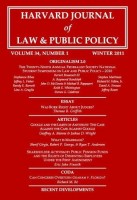While there is evidence that patents encourage investment in industries like pharmaceuticals and materials science, their effect on many other industries is markedly negative. In the computing, software, and Internet space, patents represent a serious barrier to innovation, as companies who need to assemble a huge number of licenses are subject to the holdout problem, and as incumbent or has-been firms use patents as weapons against more innovative upstarts. In some cases, these firms deliberately transfer patents to entities known as “trolls,” who exist solely for the purpose of suing the competition.
In theory, it is possible for firms to contract around these problems on a bilateral basis—as a basic reading of Coase suggests, because patents are inefficient in the tech industry, there exists in principle a bargain in which any two firms could agree to ignore patent law. The problem, of course, is the transaction costs. Transaction costs don’t merely add up in the tech industry; they multiply, because of holdout considerations and all the strategic maneuvering associated with firms competing on multiple margins.
I was thrilled, therefore, to see that Google is taking steps to solve this problem. They are proposing to set up a pool which would cross-license their patents to any other firms willing to reciprocate. All members of the pool would receive licenses to all of the patents in the pool. Unlike other existing patent pools, they seem to be interested in achieving the broadest possible participation, and it is being created purely for defensive purposes, not to receive a competitive advantage over firms excluded from the pool.
The proposal is still in a relatively early stage—they are still seeking feedback about which of four licenses the pool should use, which have different features such as permanence of licenses (“sticky” vs. “non-sticky”) and whether firms would be required to license their entire portfolio. For what it’s worth, I hope they choose the Sticky DPL, which seems like the most aggressive of the licenses in terms of taking weapons off the table.
An excellent feature of the pool, particularly if the participants decide to go with the Sticky DPL, is that it would feature very strong network effects. If several firms license their entire patent portfolios to the pool, then that strongly increases the incentive of other firms to join the pool. There is an intriguing tension here between the stated aim of the pool and the incentives pool members have to force other firms to join—by suing non-pool members who infringe on the pool’s patents, they can increase the membership of the pool. I do not strongly oppose this, but I imagine that there will be some philosophical discussion about whether such actions would be right.
Another wrinkle is that firms might transfer several crucial patents to trolls right before they join the pool (keeping a license for themselves, of course). More generally, they may look for legal ways to reap the benefits of the pool while continuing to use trolls to skirmish with their competitors.
But nevertheless, this is an encouraging development that I hope succeeds. If, as I strongly suspect, we are on the wrong side of the Tabarrok curve, the creation of a large cross-licensing pool could increase further the dynamism of our most dynamic industry.




 The Technology Liberation Front is the tech policy blog dedicated to keeping politicians' hands off the 'net and everything else related to technology.
The Technology Liberation Front is the tech policy blog dedicated to keeping politicians' hands off the 'net and everything else related to technology.